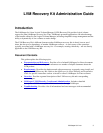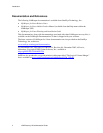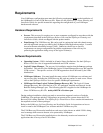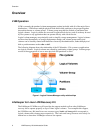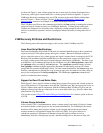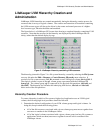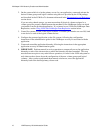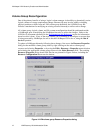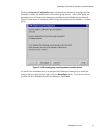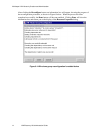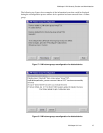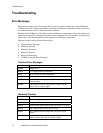
LifeKeeper LVM Hierarchy Creation and Administration
LifeKeeper LVM Hierarchy Creation and
Administration
LifeKeeper LVM hierarchies are created automatically during the hierarchy creation process for
resources that sit on top of logical volumes. The creation and extension of hierarchies containing
the LVM resource types will always be driven by the create and extend processes of a higher-
level resource type, likewise the delete and unextend.
The figure below is a LifeKeeper GUI screen shot showing a complete hierarchy containing LVM
resources. Note that the resources in the hierarchy are displayed by their LifeKeeper IDs for
clarity, rather than the default display by tags.
Figure 2: LifeKeeper hierarchy containing LVM resources
The hierarchy pictured in Figure 2 is a file system hierarchy, created by selecting the File System
recovery kit under the Edit > Resource > Create Resource Hierarchy menu selection. It
consists of a file system resource, /lv1.1fs, mounted on an LVM logical volume, /dev/vg1/lv1.1.
That logical volume is a part of the vg1 volume group, represented with the LifeKeeper ID
lvmvg-vg1. The volume group vg1 is composed of two physical disk partitions, /dev/sdc1 and
/dev/sdd1. The hierarchy also includes the underlying disk devices, /dev/sdc and /dev/sdd,
below each of the disk partitions.
Hierarchy Creation Procedure
To create a hierarchy in which a file system or higher-level application uses an LVM logical
volume, the following high-level procedure should be followed.
1. Determine the desired configuration of your LVM volume groups and logical volumes. In
doing this, keep in mind the following points.
• All of the disk resources associated with a given volume group must move together from
one server to another in the LifeKeeper cluster.
• All of the logical volumes associated with a given volume group (and any file systems or
applications which use them) must move together from one server to another in the
LifeKeeper cluster.
LifeKeeper for Linux 9





